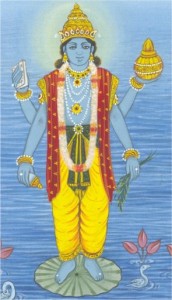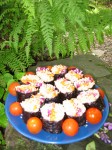Ayurveda
 ‘Ayurveda’ is a Sanskrit word, meaning ‘wisdom of life’ or ‘knowledge of longevity’, and is the world’s oldest holistic healthcare system. Ayurveda’s timeless wisdom offers us a ‘Users Manual’ for how to get the most out of life. It offers a simple approach, without being simplistic.
‘Ayurveda’ is a Sanskrit word, meaning ‘wisdom of life’ or ‘knowledge of longevity’, and is the world’s oldest holistic healthcare system. Ayurveda’s timeless wisdom offers us a ‘Users Manual’ for how to get the most out of life. It offers a simple approach, without being simplistic.
The Ayurvedic toolbox covers diet, natural remedies, lifestyle practices, rejuvenation and detoxification processes, hands-on therapies, as well as meditation and the principles of ‘wise’ living in order to have healthy minds and bodies. But be warned… there are no ‘quick fixes’ as Ayurveda is a way of life rather than a short-term intervention. There are also not many ‘one size fits all’ solutions- it takes a little time to discover your type and discover the art of living in harmony with nature- and….
- How to determine your dosha (psychosomatic) constitution
- How to follow tailored diet and lifestyle advice to stay balanced.
- Daily and seasonal advice on keeping the doshas balance.
- An understanding of the real root cause of disease and how to avoid them.
- Preventative advice on diseases you might be especially prone to.
- The importance of a healthy digestive system and how to maintain it.
- What type of Yoga is best for you (eg: Bikram Yoga is too heating for Pitta types)
- How to adapt to changing circumstances, such as conception, pregnancy or growing older.
- Advice on how to rejuvenate the body and mind post illness.
Please see here for a quick summary of the doshas with a link to a fun dosha questionniare.
Background Philosophy
Ayurvedic philosophy revolves around the concept that everything in the universe is made up of varying proportions of five basic elements. This may seen simplistic but it is a sophisticated way to classify all matter found on earth, as well as natural cycles such as seasons, childhood, adulthood and old age.
- Space/ether – is empty, allowing movement and communication. Includes all space in the body include mouth, nose, gastrointestinal tract, lungs and abdomen. It is associated with sound and the sense of hearing. A dietary example predominant in this element is popcorn.
- Air is energy and is responsible for all movement within the body. It governs the nervous system and is responsible for respiration, ingestion and elimination. It is responsible for the sense of touch and the skin. Examples include the various gases in the body and pulses which can create gases!
- Fire is radiant energy and is responsible for body temperature, transformation, digestion, absorption and assimilation of thoughts as well as food. It is associated with the sense of vision and the eye. Includes all spices, such as ginger, pepper, and garlic.
- Water is fluid and binds everything together. It is anything fluid in the body such as plasma, intercellular fluid, urine, sweat and saliva and is responsible for the sense of taste. Diet examples include milk and fruits.
- Earth gives stability, structure, strength and stamina to our bodies in the form of bones, teeth, skin etc. and is responsible for the sense of smell and the nose. Diet examples are rice, wheat, carrots, and beetroot.
The Ayurvedic doshas (psychosomatic constitution)
“Just as everyone has a unique fingerprint, each person has a particular pattern of energy- an individual combination of physical, mental and emotional characteristics- which comprises their own constitution.” (Dr Vasant Lad, The Ayurveda Institute)
A person is said to have a particular ‘dosha’ depending on the predominance of the 5 basic elements in his body. We all have (and need) the doshic qualities of vata, pitta and kapha though one or two are dominant.
 Vata (predominant in space & air elements) – the energy of movement which is dry, light, cold, rough, subtle, mobile, and clear.
Vata (predominant in space & air elements) – the energy of movement which is dry, light, cold, rough, subtle, mobile, and clear.
People with a predominance of Vata dosha have quick, creative minds but they often forget equally fast. They also talk walk and talk fast but are easily fatigued as they are not very good at holding on to their energy. They tend to have less willpower, confidence and tolerance and may feel ungrounded. Physically, they tend to be lightweight, with narrow bones, dry skin, and often feel cold. Unbalanced, they are prone to anxiety, diseases of the large intestine (main seat of vata), immune system, nervous system, joints, constipation, anxiety, colitis, arthritis, irregular periods, and Chronic Fatigue Syndrome.
 Pitta (predominant in fire & water) – the energy of digestion and metabolism which is hot, oily, light, mobile, dispersing, liquid, penetrating, sharp and agitating.
Pitta (predominant in fire & water) – the energy of digestion and metabolism which is hot, oily, light, mobile, dispersing, liquid, penetrating, sharp and agitating.
People with a predominance of Pitta dosha have penetrating ideas and sharp intelligence. Physically, they have warm bodies of moderate weight, with good muscle tone, and they sweat easily. One way to spot a Pitta predominance is premature greying and hair loss (excess heat in the head region). Out of balance they become agitated and short tempered, prone to heated emotions, and diseases of the small intestine, liver, spleen, thyroid, eyes, blood, hepatitis, hyperthyroidism, and skin problems.
 Kapha (predominant in earth & water) – the energy of lubrication and structure which is oily, sticky, cold, heavy, coarse, stable, motionless, smooth and white.
Kapha (predominant in earth & water) – the energy of lubrication and structure which is oily, sticky, cold, heavy, coarse, stable, motionless, smooth and white.
Kapha types are blessed with strength, endurance and stamina. They are calm, tolerant and forgiving. They may be slower to learn but have excellent long term memory. They may be prone to weight gain as they have slower metabolisms, and a tendency not to exercise enough. Unbalanced (eg: due to excess weight loss) they are prone to greed, envy, melancholy, lethargy, depression, diseases of the stomach, lungs, pancreas and sinuses, diabetes, water retention, nausea, and mucous conditions.
The three gunas
This concept is very important in understanding both Ayurvedic and Yogic approaches to health. Everything in the universe is seen to be composed of three qualities in varying proportions.
- Sattvic qualities are light, clear and stable. It is the state of being which comes from spiritual activities, in which we manifest our most virtuous qualities. The pure state of sattva can be said to be that of enlightenment.
- Rajasic qualities are active, agitated, turbulent or motivated and results from a disconnection between spirit/ God and instead feelings of fear, worry, anger, jealousy, attachment and depression.
- Tamasic qualities are heavy, dull, dark and inert, and lead to aspects of our darker nature and harm to self and others. The actions include violent and self-destructive behaviors such as addiction, depression and suicide.
Signs of the doshas and gunas being well balanced include:
- Sound sleep and easy, natural awakening
- Good appetite, digestion and absorption with a regular bowel movement before breakfast
- Sparkling eyes and glowing skin
- A calm, clear mind and cheerfulness
- Freedom from addictions
- Energy to work and exercise regularly with good immunity
Ayurvedic view on disease and treatment
Ayurveda views that the human body, when healthy, is in harmony, self-perpetuating and self-correcting just as the universe is. We get unbalanced through diet, emotions, lifestyle, seasonal factors, physical trauma, and toxins. Ayurveda seeks to find this root cause of imbalance. It prescribes different regimens for each individual to maintain doshic balance and become more sattvic. In this way, it treats the whole person, not just presenting symptoms. An analogy is to view disease as unwanted weeds. Modern medicines can act like herbicides, largely treating symptoms but not often the causes, and may also have unwanted side effects. Ayurveda helps maintain the health of the soil so that weeds are unable to grow. It can help with the following:
- Women’s health issues including difficult periods, infertility, pregnancy care and menopause
- Digestive complaints eg: Chron’s disease, Ulcerative Colitis, IBS
- Respiratory problems, hayfever, allergies and skin disorders
- Hypertension, stress, anxiety, insomnia and depression
- ME/ CFS, Fibromyalgia and cancer recovery
- Weight gain/ loss and thyroid imbalance
- Headaches and migraines
- Joint problems
“A treatment is not ideal, if it cures one disease and causes the increase of another disease at one and the same time.” Astanga Samgraha of Vagbhata (Su. 21:29)
Treatment includes herbal formulations, massage and other detoxification techniques. These are combined with a strong emphasis on diet and lifestyle changes. To take a simple example, a person with a cold is suffering from congestion and mucous due to excess water and earth elements in their system. To alleviate symptoms they take ginger tea, predominant in the fire element. They would also do well to avoid dairy and cold foods which make congestion worse.
For more chronic, serious diseases an individual may require deep detoxification, or ‘Panchakarma’ (5 actions). This is a series of 5 cleansing therapies (Emesis, Purgation, Oil and Decoction enemas and Nasya, or drops of medicine in the nose). These remove deep-seated toxins and stress from the body and mind, whilst balancing Vata, Pitta and Kapha. This is not available at the Bristol Ayurveda clinic, but advice is given on where this treatment is available in both the UK and India if required.
Balancing doshas through diet
 Proper digestive health (agni) is at the heart of Ayurveda and is the first step for all. Most of us have ‘ama’(undigested matter) in our bodies, which is at the root of many sign of physical and mental imbalance. Signs of ama include a coating on tongue and feelings of heaviness, especially after eating. An optimal dietary regimen combines a sattvic diet with a diet appropriate for one’s dosha:
Proper digestive health (agni) is at the heart of Ayurveda and is the first step for all. Most of us have ‘ama’(undigested matter) in our bodies, which is at the root of many sign of physical and mental imbalance. Signs of ama include a coating on tongue and feelings of heaviness, especially after eating. An optimal dietary regimen combines a sattvic diet with a diet appropriate for one’s dosha:
-
Vata types have variable appetite & digestion, often attracted to astringent foods (salad & raw vegetables) but balanced by warm, heavy, slightly oily, nourishing diet with sweet, sour and salty taste. Regular meal times are important, and one pot meals (soups, stews, casseroles, kitchadi. Avoid frozen, cold or raw foods; eat warm foods and spices.
-
Pitta types have strong metabolism and appetite, liking plenty of food and liquids, hot, spicy food and cold drinks. Balanced by mildly spiced diet, with sweet, bitter, astringent tastes (to calm their natural aggression and compulsion), heavy or nourishing and slightly dry. Vegetarianism is well suited to pitta types, and avoiding salt, coffee, alcohol and tobacco. Ghee is excellent. Limit salt intake; eat cooling, non-spicy foods, avoid alcohol and caffeine.
-
Kapha types have slow digestion, and are attracted to sweet, salty, oily foods but are balanced by bitter, astringent and pungent tastes. They need foods to invigorate the mind, and light, dry, spicy diet, and a vigorous exercise regime. Avoid heavy, oily foods, dairy, iced food and drinks. Eat light and dry foods.
“A person having equilibrium of doshas, agnis (digestive fire), dhatus (tissue), mala (wastes) and kriyas, and a person who is possessed by spiritual, sensual and mental happiness is called a healthy person.” (Sushruta, founding father of surgery, 2BCE-1CE)
